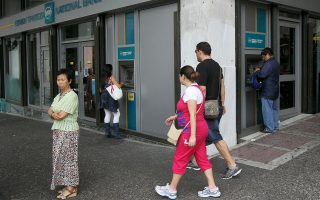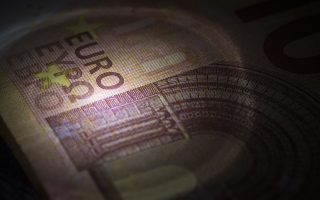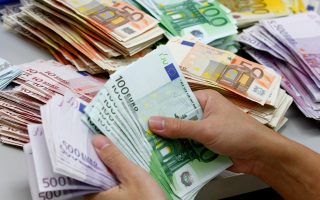Tax squeeze on property owners set to tighten

In the last five years, hundreds of thousands of property owners have been asked to pay property taxes adding up to as much as 10 percent of the market value of their assets. The slump in market prices in comparison with so-called objective values (used for tax purposes) and the fact that the Single Property Tax (ENFIA) is based on the surface area and not the actual value have led to outrageous tax rates.
The annual tax rates come close to 2 percent of the real value of a property, while the real tax rate on the income that a property can fetch often exceeds 50 percent, practically eliminating any yields.
While many owners are already struggling, the Finance Ministry is examining a further increase in the tax on property incomes. The new bailout agreement refers to a tax hike from 11 to 15 percent on incomes from letting, while one idea being examined by the ministry provides for rental incomes to be included in the tax rates for salary workers and pensioners, which means that rates could soar up to 46 percent in some cases.
All this while the objective values remain unchanged despite the major drop in market rates, while there are thousands of cases whereby more expensive properties have a smaller ENFIA rate than cheaper ones, due to shifts in market values.
For instance, an old apartment of 70 square meters in the center of Athens still has an objective value of 68,152.50 euros despite its age, owing to the high-rate zone it is situated in.
Recently this property changed hands for just 22,000 euros. So what about the ownership tax paid from 2011 to date? For two years in a row the owner paid 350 euros annually in a charge added on to his electricity bill, and in 2013 he paid 297.50 euros. The 2014 ENFIA stood at 264 euros, and it will be the same this year.
Therefore, in five years he has had to pay a total of 1,525 euros for an apartment that is valued at no more than 22,000 on the market. This means that over those five years he has paid 7 percent of the property’s value in taxes.
There are even worse cases: A 40 sq.m. apartment, also in the city center, was sold for 9,000 euros five months ago, while its objective value stands at 27,062 euros. This property has an ENFIA of 150 euros per year, while since 2011 its owner has had to pay a total of 870 euros. This means that about one-tenth of the apartment’s market value has been paid out in taxes.
What kind of rental yields can a 40 sq.m. apartment fetch in a year, given that its market value is just 9,000 euros? Even if it fetches 1,000 euros per year, which brings its gross yield to 11 percent, its owner will have to pay income tax amounting to a maximum of 330 euros per annum, as the rate ranges from 11 percent to 33 percent depending on the total amount of rental income. He will also have to pay a solidarity levy of between 20 and 60 euros (depending on his overall income) and 150 euros for ENFIA. That brings the total annual bill to above 500 euros in several cases, meaning that the actual tax rate could climb higher than 50 percent.
Worse, if the scenario currently under examination involving taxing rental incomes according to the regular income tax, then landlords may have to face a tax up to 42 or 48 percent, bringing the actual tax rate on their property yields to between 57 and 63 percent.





